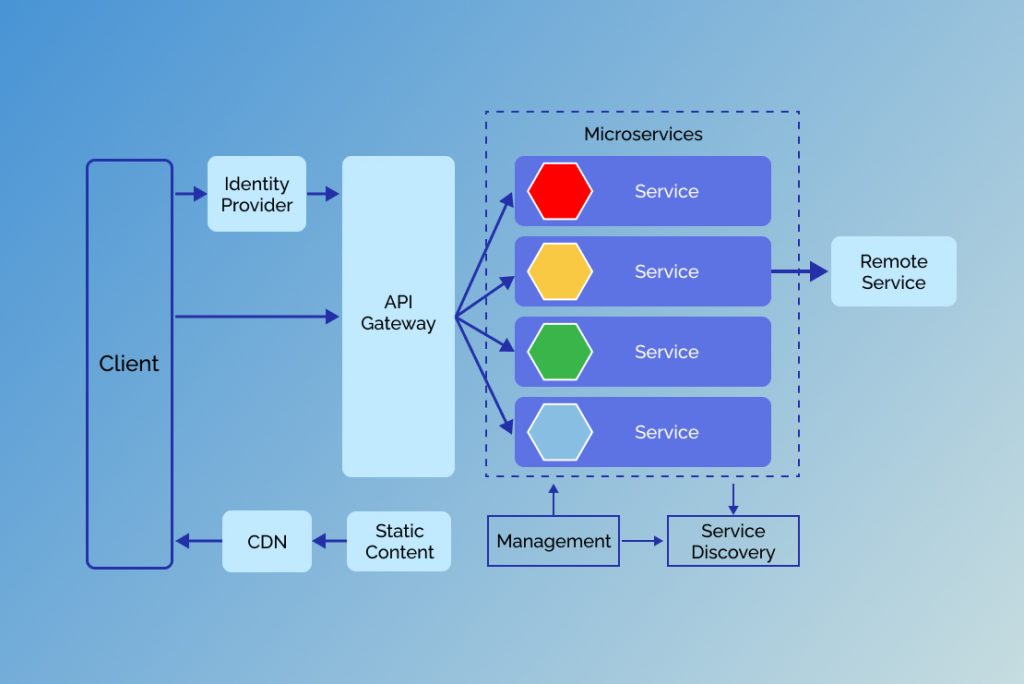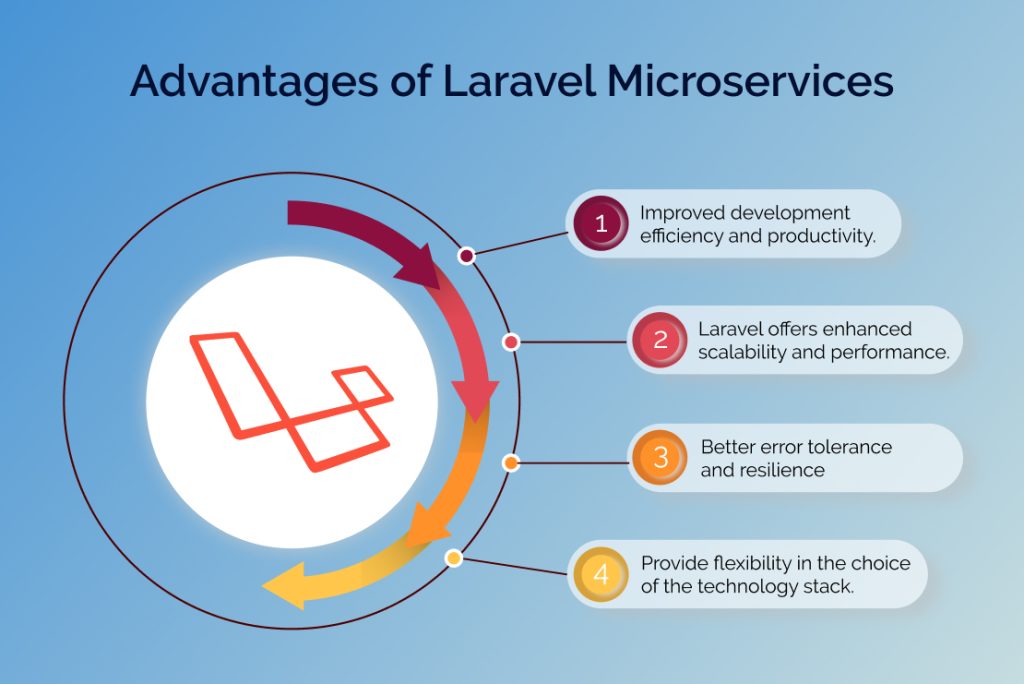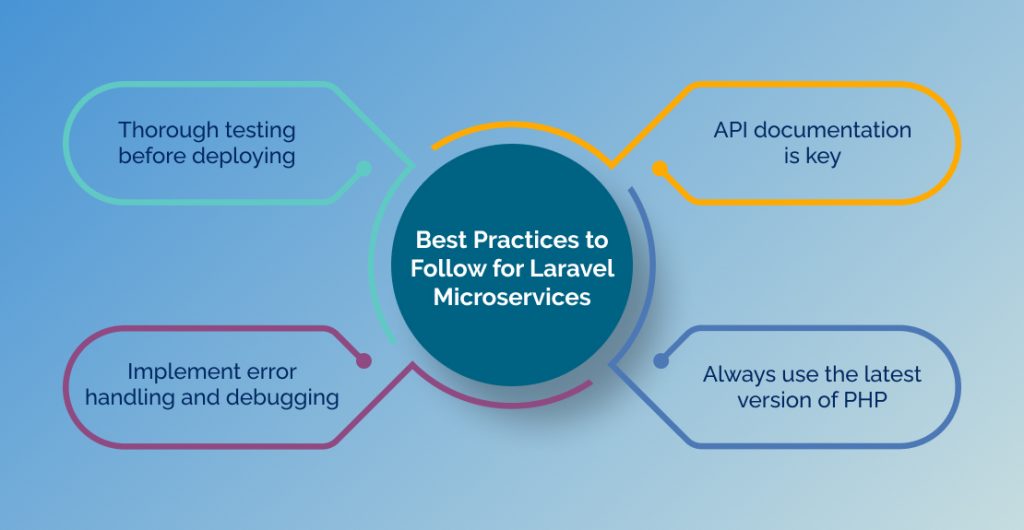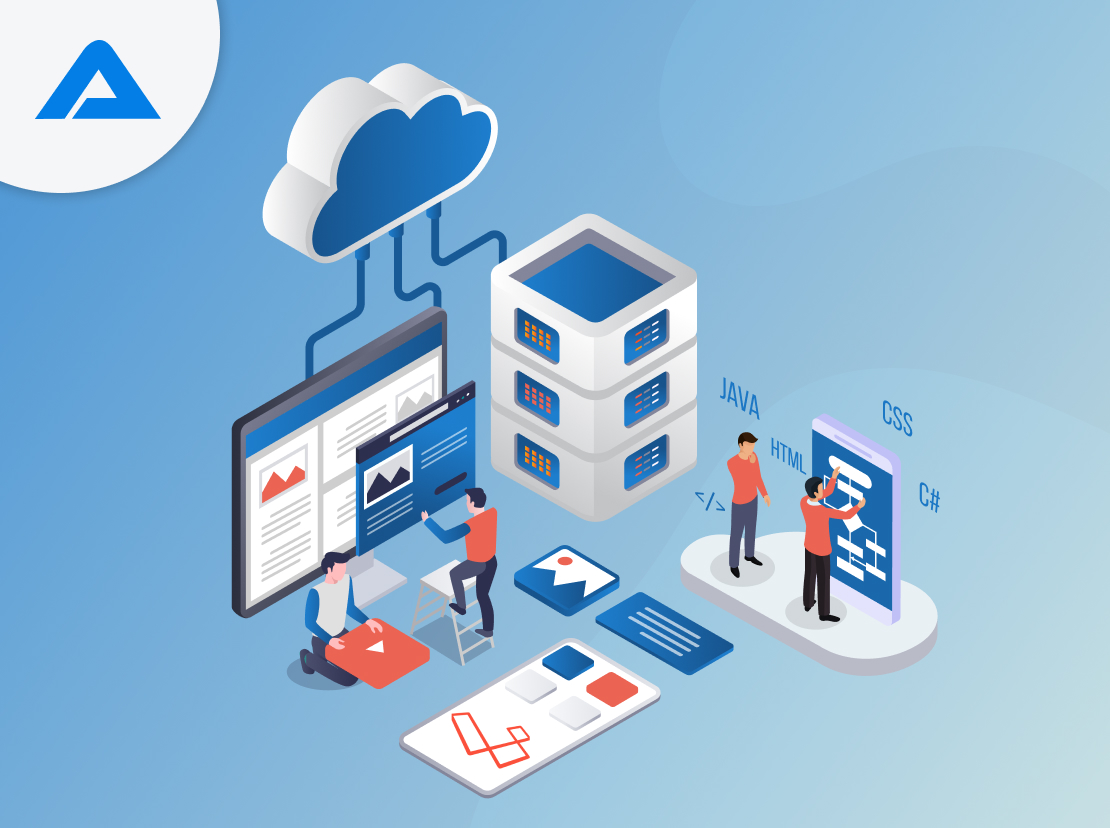For a few years, laravel microservices have become the buzzword for web app development. With its extensive tools and features, Laravel makes app development faster, more efficient, and more cost-effective.
Businesses looking to deliver the best experiences to their users without adding more overheads to their development costs find this ideal for them. And, Laravel microservices play a huge role in this.
Microservices are small, detachable services that interact with the web app’s front and back end to deliver seamless user experiences. At the same time, it makes managing, optimizing, and migrating apps much easier.
If you are a business looking to understand how Laravel microservices can help you, let’s break it out for you in this blog.
What is microservices architecture?
Imagine building an application where each component works independently yet seamlessly integrates with the others.
Wouldn’t you love it? That’s the power of microservices architecture.
Using a microservices architecture, you can break down a complex monolithic application into smaller, self-contained services.
This modular approach offers a range of benefits, including improved scalability, fault isolation, and flexibility in technology choices.

A microservices architecture ensures the following:
- Modularity by separating functionalities into individual services.
- Developers can focus on specific service domains.
- Faster development, easier maintenance, and cost-effective ops.
- Independent development of each microservice as needed.
- Microservice development using the most suitable technology stack for it.
- Enabled dividing the application into smaller components.
- Better scalability and handle increased workloads effectively.
Related Article: Laravel vs NodeJS
Key advantages of using Laravel microservices
We hope that you have a clear understanding of what Laravel microservices are.
So, let’s explore the advantages of using Laravel for microservices development in detail.

Improved development efficiency and productivity.
With Laravel, you can leverage its expressive syntax and comprehensive ecosystem to streamline your development process.
The framework provides powerful tools, such as the Artisan command-line interface, which automates repetitive tasks and boosts productivity. The result is quick apps, which the Laravel experts love at AddWeb Solution.
Laravel offers enhanced scalability and performance.
The ability to scale individual microservices independently allows you to allocate resources effectively based on the specific needs of each service. Laravel’s caching mechanisms optimize performance by reducing database load and speeding up data retrieval.
Better error tolerance and resilience
Laravel’s modular structure and loose coupling between microservices ensure that a failure in one service does not impact the entire system.
This fault isolation enables easier maintenance, debugging, and troubleshooting.
All these ensure that you get a more resilient application.
Provide flexibility in the choice of the technology stack.
Each microservice can be developed using the most suitable programming language, framework, or database system based on specific requirements.
As such, there is no limitation to choosing the tech stack you need to use. This flexibility allows you to leverage the best tools for each service, maximizing efficiency and effectiveness.
How to design microservices with Laravel
To create a successful microservices architecture, careful design and planning are essential.
Laravel’s expressive syntax and flexible structure make identifying service boundaries easier and distributing functionalities accordingly.
You can achieve loose coupling between components by breaking your application into smaller, self-contained microservices. This decoupling enables independent development, deployment, and scalability.
Each microservice focuses on a specific domain or functionality, improving organization and maintainability.
Related Article: Laravel 10 is Released: A Deep Dive Into the Latest Updates and Features
How to build microservices with Laravel
Now, let’s delve into the practical aspects of building microservices with Laravel.
The first step is setting up a Laravel project designed for microservices development.
Laravel’s intuitive command-line interface makes it easy to create a new project and configure essential components.
The following elements are a must when building microservices with Laravel:
Planning the microservices as your business need
The biggest advantage of Laravel microservices is that they are flexible as your business requires. No matter what your business needs, it can deliver. Many businesses fail at this stage by ignoring plans, so they cannot take advantage of what Laravel microservices offer.
You can avoid this pitfall by planning what and how you need it from the beginning. If you cannot decide this, hire a Laravel development company early in the project to nail this.
After creating a blueprint of what you need, giving shape to it becomes much easier.
Deployment and monitoring
After developing the microservices you need, deploying and assessing them is the next step.
As scalability is a critical aspect of any microservices architecture, Laravel provides multiple options for scaling your microservices horizontally. So, the idea is to get the best outcome that fits you.
You can deploy multiple instances of a specific microservice to handle increased traffic effectively.
Monitoring the health and performance of your microservices is vital for maintaining a robust system.
You can use Laravel Telescope, a powerful debugging and profiling tool. This comprehensive monitoring capability enables you to identify and resolve performance bottlenecks, ensuring optimal performance of your microservices architecture.
Ensuring the security of the application
Security is of utmost importance when dealing with distributed systems and microservices architectures. Laravel provides robust features to ensure the security of your microservices.
Authentication and authorization mechanisms are essential to protect sensitive data and restrict access to authorized users. These mechanisms enable secure communication between microservices and protect against unauthorized access.
When it comes to inter-service communication, encryption plays a crucial role in maintaining data confidentiality.
Laravel supports various encryption algorithms, and you can easily encrypt and decrypt data using Laravel’s encryption utilities.
Best Practices to Ensure High-Performing Laravel Microservices
To maximize the benefits of Laravel microservices, it is important to follow best practices and adopt proven strategies:

Thorough testing before deploying
Implement comprehensive unit tests for each microservice to ensure their functionalities work correctly. Integration testing between microservices is also crucial to validate the interactions and communication between different components.
Following this vigorously can ensure that your app performs well at the user end.
API documentation is key
Fostering collaboration and maintaining clarity in a microservices ecosystem is paramount.
It would help if you created clear and well-documented APIs for your microservices, including endpoint descriptions, expected data formats, and authentication requirements.
Adopting versioning practices to ensure backward compatibility and smooth transitions is a great practice when introducing changes to your microservices.
Implement error handling and debugging
Use robust error-handling mechanisms to maintain the stability and reliability of your microservices architecture. Logging and exception handling help you capture and handle errors effectively.
Laravel’s logging system provides comprehensive tools for monitoring and debugging your microservices. At AddWeb, we follow these practices without fail when we work on any project involving Laravel microservices.
Always use the latest version of PHP
This goes without saying. However, many developers fail to do it as they get drawn into more complex aspects of optimizing Laravel microservices.
Therefore, ensure that you have upgraded your PHP to the latest version.
Doing so helps you improve your security as well as performance. Many developers overlook that PHP gets buggy and slow as it ages.
At AddWeb Solution, we always use the latest version of PHP on all our projects.
Conclusion
Laravel is an excellent platform for web app development. If you are thinking of using Laravel microservices, you are making a great choice that will help you improve your ROIs and deliver an impressive user experience.
By leveraging Laravel’s power and flexibility, you can build scalable, modular, and robust systems. You can also scale your app without any restrictions.
However, having an experienced Laravel development agency to help you with the development is also crucial to the success of your project. If you want to find an expert Laravel development company in India, AddWeb Solution is your best choice.
We fit your bill perfectly with years of experience and an extensive portfolio. Hire the best Laravel developers at AddWeb Solution to complete your project quickly.
Contact us and learn why you should hire Laravel experts in India from us.
Frequently Asked Questions
Laravel Microservices involve breaking down an extensive application into more minor, independent services that communicate with each other. Unlike monolithic architectures, microservices offer greater scalability, flexibility, and maintainability.
Laravel Microservices provide scalability, ease of maintenance, and flexibility in development. They allow independent deployment of services, making it easier to update and expand your application as needed.
Benefits include improved scalability, easier maintenance, better fault isolation, increased development speed, and the ability to use different technologies for different services.
Microservices can be optimized individually, allowing for better performance tuning. They also enable efficient resource allocation and scalability, enhancing overall application performance.
Best practices include defining clear service boundaries, using API gateways for communication, employing asynchronous communication where appropriate, implementing proper error handling, and maintaining comprehensive documentation.
Implementing transactions and employing strategies like eventual consistency can help maintain data integrity in a Laravel Microservices architecture. Each microservice can have its database, and interactions between services can be carefully managed.
It is possible to migrate an existing Laravel monolithic application to a Microservices architecture. It often involves breaking the application into more minor services and gradually transitioning functionality.
